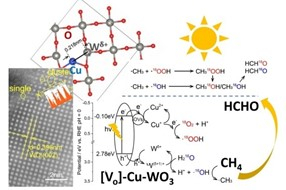
Figure 1. Selective methane conversion to formaldehyde over a [Vo]-Cu- WO3 photocatalyst.
Professor Zhengxiao Guo from the Department of Chemistry at The University of Hong Kong (HKU) and Professor Junwang Tang, now at the Department of Chemical Engineering at Tsinghua University, have collaborated to develop a highly active and selective catalytic material that can effectively transform methane, a powerful greenhouse gas, into formaldehyde, an indispensable chemical, in a waste-free manner.
This novel material, derived from tungsten trioxide (WO3 catalyst), has a dual active site composed of copper and tungsten atomic species that work together to enable an efficient and selective conversion process.
Change the Unchanged: Methane Conversion
Methane, the main component of natural gas, is a common carbon source for many chemicals. However, it is a powerful greenhouse gas with a capacity to warm the planet more than 70 times more than carbon dioxide. In order to obtain net-zero energy and chemical supply while simultaneously addressing environmental challenges, Catalytic methane conversion (turning methane into other chemicals) represents a great opportunity.
On the other hand, Methane is an extremely stable molecule that is resistant to activation, especially in mild or ambient conditions. Therefore, establishing high activity and selectivity in methane conversion is a considerable problem, and many chemists regard selective activation of the intermolecular carbon-hydrogen bond as one of the most elusive “holy grails” in catalysis.
"Solar conversion of methane is highly desirable for both low-carbon and high-value-added chemical syntheses. However, product selectivity and production efficiency are key to success. This requires an in-depth understanding of the conversion mechanism, careful design of the catalyst, and complementary techniques to confirm its performance—a good case of multidisciplinary tasks that require strong collaborative dedication. That's exactly what the team has managed to do—with much value-added outcome," said Professor Zhengxiao Guo, one of the corresponding authors of the paper.
This finding paves the way for further research and development of new photo-catalysts for a variety of chemical conversions, promoting more sustainable and efficient processes in the chemical industry.
Link of journal paper can be accessed from: https://www.nature.com/articles/s41467-023-38334-7
